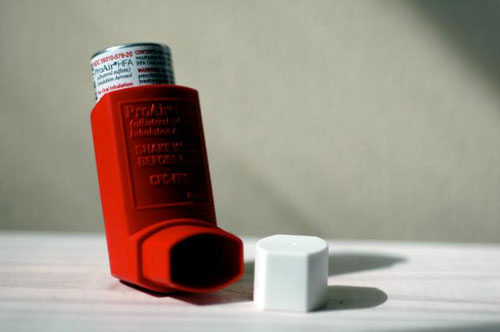Asthma rates in children have dropped by more than 10% in ten years, according to a new survey.
The percentage of youngsters with the condition have dropped sharply since a peak of almost 30% in 2004.
Experts believe the reduction could be due to more careful diagnoses being made and changes in the environment.

Despite the decrease, rates of hay fever and eczema in the same sample of children have remained relatively static over the same time period.
Run by researchers from the University of Aberdeen, The Aberdeen School Asthma Study was first completed in 1964 and exactly the same questions have been answered by parents of children aged 9-12 years attending the same city primary schools in 1989 and every five years since.
Barometer
The previous findings are known to act as an excellent barometer for asthma rates in children across Western Europe.
3,935 surveys were completed by parents of children at 41 schools across Aberdeen. The results have formed the basis of a paper which has been published this month in the British Medical Journal Open.
Dr Steve Turner, Senior Clinical Lecturer in Child Health at the University of Aberdeen, said: “There are likely to be a number of contributing factors to the drop in instances of asthma among school children in Aberdeen, and indeed across Western Europe.
Diet
“Some of the apparent drop is down to more careful diagnoses being made nowadays. In years gone by asthma was perhaps being diagnosed more freely than it ought to have been.
“There have also been clear changes in our environment – from diet, to the air we breathe. Some might even be tempted to say the smoking ban could be part of it, but we don’t know for certain.
“Asthma is typically thought of as being an allergic condition, and allergy also causes hay fever and eczema. However, if asthma rates are dropping and hay fever and eczema aren’t, it suggests that allergy may not be that important to asthma after all.”
Generation
The questionnaires’ format has remained completely unchanged in the 50 years since it was first sent home with Aberdeen school children. It is highly likely that some of the children involved in this latest survey will be third generation of their family to take part in the study.
The survey asks parents four simple questions to indicate if their child has suffered or does suffer from asthma, hay fever, eczema or wheeze.
It is the first published childhood asthma prevalence survey of any UK population since the Aberdeen team’s last survey in 2009.
Professor Devereux, the Professor of respiratory medicine at the University of Aberdeen, says: “Prevalence of asthma is down – but is still nearly double the rate it was in 1989 (10.3%) and is far higher than the rate recorded 50 years ago in the first study (4.1%).
“These surveys have given us incredibly helpful insights to asthma prevalence in Aberdeen over the years. And if you plot that prevalence over time against other studies, asthma frequency elsewhere shadows that in Aberdeen with uncanny precision.”

